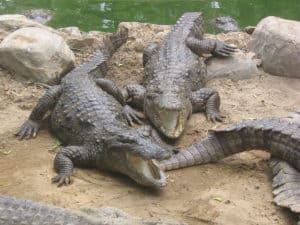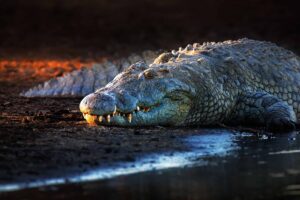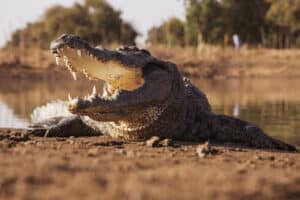You will never see it coming: born to lurk, the slender-snouted crocodile is a master of stealth. They can wait very still for prey on the water’s surface, plunge to the bottom, or roll around the size of their bodies without causing even the slightest ripple. A video has been making the rounds on the internet showing a crocodile appearing seemingly out of nowhere!
Watch The Full Video Below!
As the video begins, there is no obvious sign of danger as a man pokes a stick into the murky water. The waterway is steep and surrounded by overgrown grass that has been sun-dried. The man, who looks like a croc wrangler, is barefoot and only has a flimsy stick for defense.
What begins to be a typical scene turns into a frantic splash of water as a 20-foot, boat-sized saltwater crocodile breaks through the water’s surface, either to attack or as a playful gesture. The crocodile is so sneaky that it would be nearly impossible to notice it before getting frighteningly close to the aquatic predator.
The clip is even more impressive, as is the man’s composure when the crocodile gives no indication that it’s about to leap from the water. In fact, there are no hints that the animal is even present until the last minute!
As the video unfolds, the crocodile walks in the usual side-to-side manner, following its caretaker, now holding a piece of meat. As apex predators, crocodiles see anything, including humans, as a suitable food source, so it is unclear whether it is interested in the meat or the man. The massive carnivore attempts to bite the stick, but the man quickly moves out of the way.
How Do Crocodiles Float?
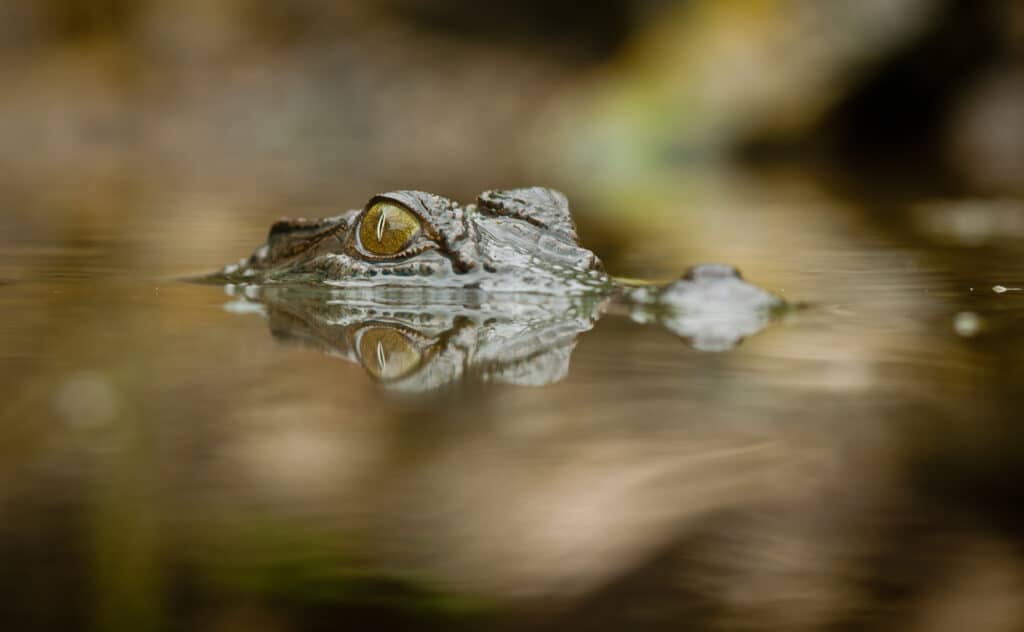
Crocodiles float by controlling the position of their lungs.
©Johan Larson/Shutterstock.com
Crocodile buoyancy is almost as important to their survival as their ability to move. This is accomplished by controlling their lungs’ position. They move their lungs around their torso like floats, using four sets of muscles. When the lungs are pulled back towards the tail, the animal’s center of buoyancy shifts backward, and it dives; when they are pushed towards the head, it rises; and when they are pushed to the side, it rolls.
Is It Normal Behavior For A Crocodile To Sneak Up On A Human?
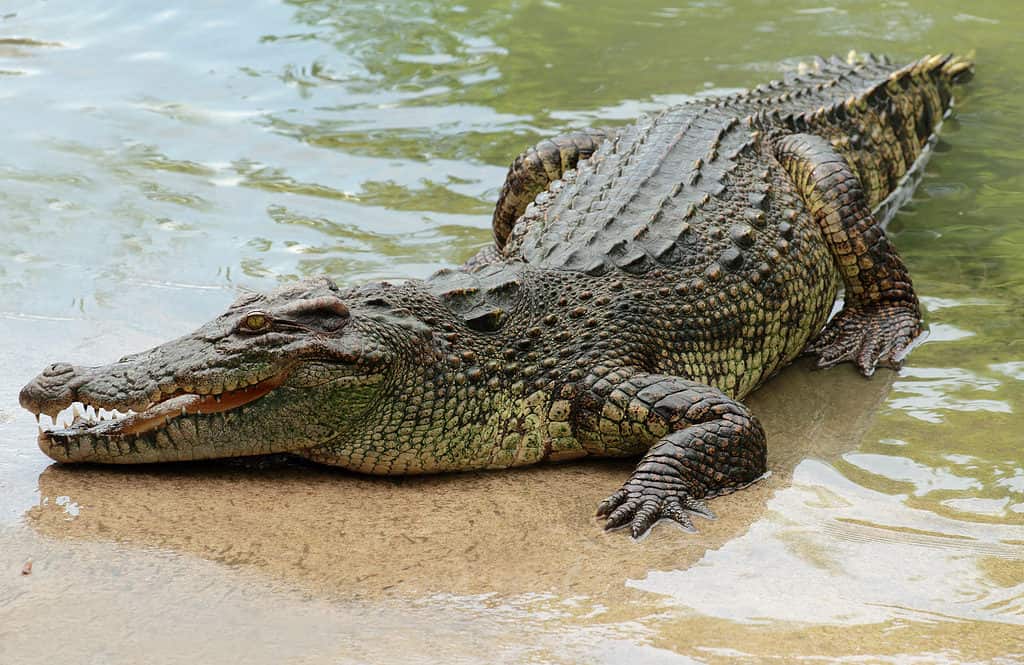
Crocodiles are stealthy hunters who can easily sneak up on their prey.
©Naypong Studio/Shutterstock.com
Crocodiles have a reputation for being stealthy predators. It’s no wonder that people can be startled when one suddenly appears nearby, as it seems to appear out of nowhere! But is this normal behavior?
Yes and no. Crocodiles do have the capacity to sneak up on their prey, but they don’t normally target humans in this way. In fact, most crocodiles shy away from human contact unless they are provoked or threatened. So while it may seem like they are sneaking up on us, oftentimes, it’s just because we’re not paying close enough attention to our surroundings and fail to notice them until they are quite close by. They can also be difficult to spot due to their natural camouflage coloring, which helps them blend in with the environment around them.
Where Do They Live?
Crocodiles are found in tropical regions around the world. They inhabit a variety of habitats, including rivers, lakes, swamps, estuaries, and even coastal areas. Some species, such as the saltwater crocodile, have adapted to live in saltwater environments. Most species prefer freshwater and can be found living in rivers and creeks across northern Australia. In many parts of Africa and Southeast Asia, they are also common inhabitants of wetlands and mangrove forests. Crocodiles hunt mainly at night or during twilight hours when their prey is most active, while they bask on riverbanks or sandbars during the day to absorb heat from the sun’s rays.
Lifespan
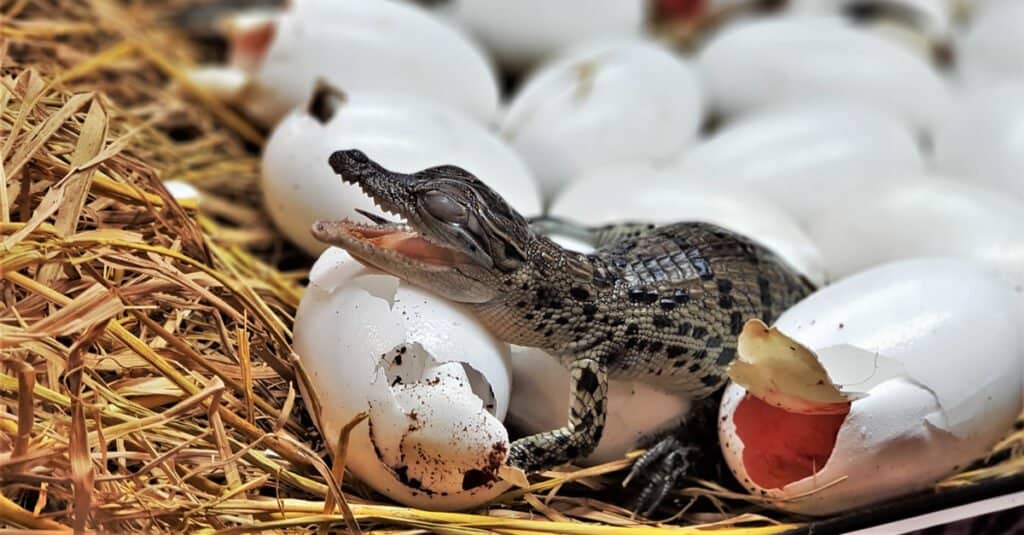
Freshwater crocodile hatchlings are very tough and resilient.
©Arunee Rodloy/Shutterstock.com
The average lifespan of a crocodile is between 70 and 100 years. However, some species may live longer. This makes them one of the longest-living animals in the world. Crocodiles are currently threatened by human activities such as poaching for their skin, habitat destruction due to development, and pollution. They are also targeted for meat and eggs by local people who rely on these resources for food. In addition, climate change can cause changes in water levels which can be detrimental to their habitats. As such, conservation efforts need to be put into place in order to protect these ancient reptiles from becoming endangered or extinct.
How Big Are Saltwater Crocodiles?
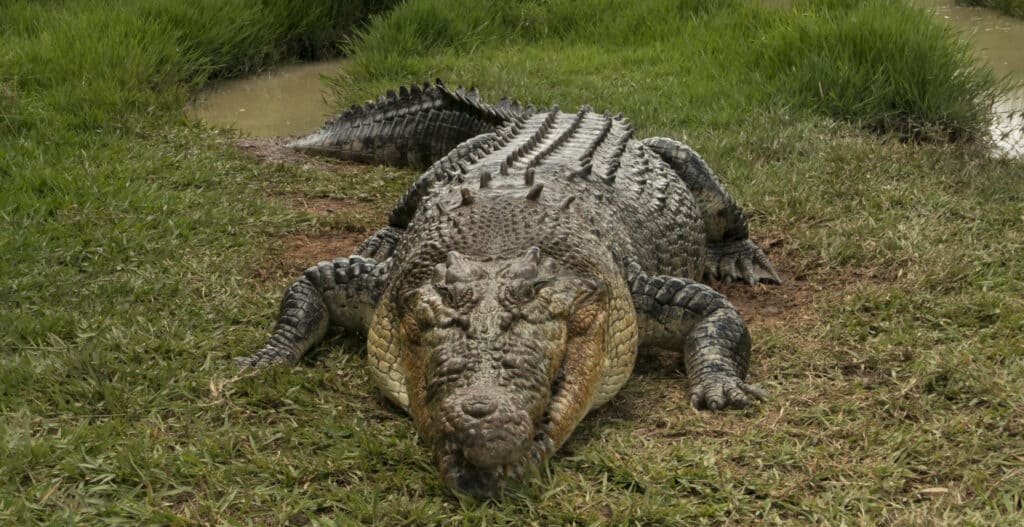
The largest saltwater crocs are around two thousand pounds!
©Firepac/Shutterstock.com
Saltwater crocodiles are among the largest reptiles on the planet, reaching impressive sizes as they grow and mature. While hatchlings typically weigh in at just a few ounces, they can reach an adult weight of up to 2,000 pounds. In terms of length, they typically measure between 6 and 7 feet when fully grown, although specimens of up to 20 feet have been recorded.
At hatching, the crocodiles measure in at around 8 inches in length. As juveniles, they grow to an average length of 4 to 5 feet. At this stage, they weigh between 20 and 40 pounds. As they reach adulthood, the average length increases to between 11 and 13 feet, and they can weigh up to 1,000 pounds.
The largest saltwater crocodiles can reach lengths of up to 20 feet and weigh up to 2,000 pounds. This is the equivalent of the weight of four to six adult humans. Despite their size, these crocodiles are surprisingly agile and can move quickly through the water.
The photo featured at the top of this post is © PomInOz/Shutterstock.com
Sources
- Londolozi blog, Available here: https://blog.londolozi.com/2021/06/02/what-makes-crocodiles-such-stealthy-hunters/
- kakadu NATIONAL PARk, Available here: https://parksaustralia.gov.au/kakadu/plan/safety/
- crocBITE (1970) http://www.crocodile-attack.info/about/safety-information#:~:text=Crocodilians have a special valve,crocodilian attacks occur this way
Thank you for reading! Have some feedback for us? Contact the AZ Animals editorial team.



